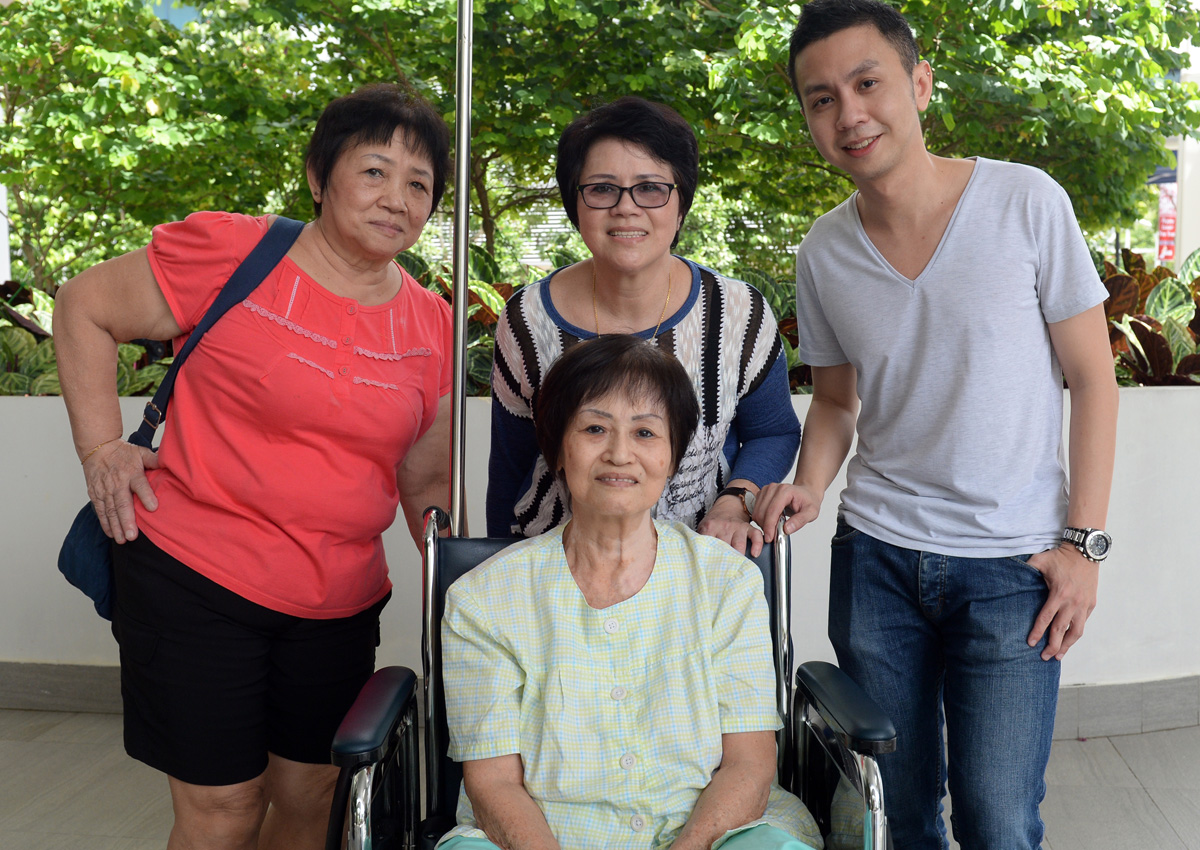Online alerts helpful, says ministry, but find out more about the person’s situation first
The rise of social media is providing the authorities with a fresh way to locate people who are in need of assistance.
Since the Ministry of Social and Family Development (MSF) joined Facebook in 2011, it has been receiving more online alerts. And while some cases were already known to the Government and voluntary welfare agencies, at least one-third is new to the social services.
In 2013 and 2014, MSF received about 300 public queries on its Facebook site, with one in five pertaining to people who may need help.
The rest are questions directed at the ministry, such as where to find the nearest social service office.
Last year, the number of alerts for help increased to 130, out of 250 public queries.
On average, the ministry receives 11 alerts about the needy each month. Alerts can be about people who need financial aid, or alleged child abuse. “We generally acknowledge such alerts within a day… We inform various MSF divisions for follow-up – such as the social service offices, Child Protection Service and the Destitute and Shelter Support Branch,” said an MSF spokesman.
In December, MSF completed its network of 24 social service offices which, together with the 43 family service centres, means 95 per cent of the island’s needy residents now have access to help within 2km of where they live or work.
Mr Tan Chuan-Jin, Minister for Social and Family Development, told The Sunday Times: “The fact that people are concerned and raising alerts is a good thing. It shows that people do care and would like to help those around them.”
But, he said, the public could do more so that the ministry can reach out to the needy more effectively. They should ask for further details and find out more about the person’s situation.
“Oftentimes, the information is sketchy and can become a wild goose chase if it’s lacking in details,” he said.
“There were also instances where persons in need are already being assisted by our social workers but chose not to highlight the fact, thus giving the impression that they are left to fend for themselves.”
Last October, for example, a post about an elderly man in Ang Mo Kio who asked a passer-by for food had almost 6,000 shares and more than 25,000 likes. But the case turned out to be a false alarm.
“Sometimes, these individuals are managing on their own and may not desire assistance. For those who are already being assisted, their situations may have changed over time and their being flagged can help us review the assistance required,” said the minister.
To help the ministry better do its work, members of the public who spot those in need of assistance can help by:
- Advising the person in need to approach the Social Service Office for help. The person can call the ComCare Hotline on 1800-222-0000 to find the Social Service Office closest to him/her; or
- Obtaining his/her personal details (name, NRIC, address and contact details) and furnishing these to the ComCare Hotline, or private messaging MSF Facebook for follow-up by the Social Service Office; or
- Referring him/her directly to the nearest Social Service Office (www.msf.gov.sg/ssolocator)
Glad her nephew intervened
Until social workers came and took her to the hospital, 66-year-old Sim Choo Chuan had been stuck in her flat for more than a year.
 Her legs were swollen – with some parts rotting away – because of a severe bacterial infection, and she could hardly walk.
Her legs were swollen – with some parts rotting away – because of a severe bacterial infection, and she could hardly walk.
What started in 2013 as an open wound on her left calf about the size of a 50-cent coin soon became raw, pus-filled wounds all over the bottom half of the leg, down to the toes. Her right leg was not spared either. The wounds stank and her appetite suffered so much she lost 30kg in two years. Still, the retiree refused medical attention.
“I was afraid they would amputate my legs,” said Madam Sim.
Having failed to persuade her to see a doctor, her nephew Keith Ng, a consultant at start-up Gametize, posted a plea on Facebook – together with a picture of Madam Sim’s legs.
Within an hour of the post last Nov 20, the Ministry of Social and Family Development contacted Mr Ng, while volunteers from Keeping Hope Alive and Thye Hua Kwan Moral Society visited Madam Sim at her four-room flat. Six hours later, she was in an ambulance, on her way to a hospital.
Since then, she has had stents implanted to improve her blood flow, and her fears of losing both legs proved to be unfounded.
Her surgeon Steven Kum, who was recommended by friends through Facebook, managed to treat her by amputating only her left toes, said Mr Ng, 34.
Madam Sim spent time recovering at The Integrated Building – jointly run by Changi General Hospital and St Andrew’s Community Hospital.
In 2013, Madam Sim did seek medical attention at the National University Hospital. But travelling took a toll on her. Also, taxis were too expensive. So she stopped going.
There was also no one at home to look after her. Her husband has dementia and was placed in a nursing home a year ago. Her daughter had married and moved out, her elder son has been in and out of jail for years, and her younger son has mental health issues.
She is glad her nephew finally intervened and got social workers to persuade her to see a doctor. “If he didn’t help me, the infection could have spread and become much, much worse,” she said.
kxinghui@sph.com.sg

This article was first published on March 6, 2016.
Get a copy of The Straits Times or go to straitstimes.com for more stories.






